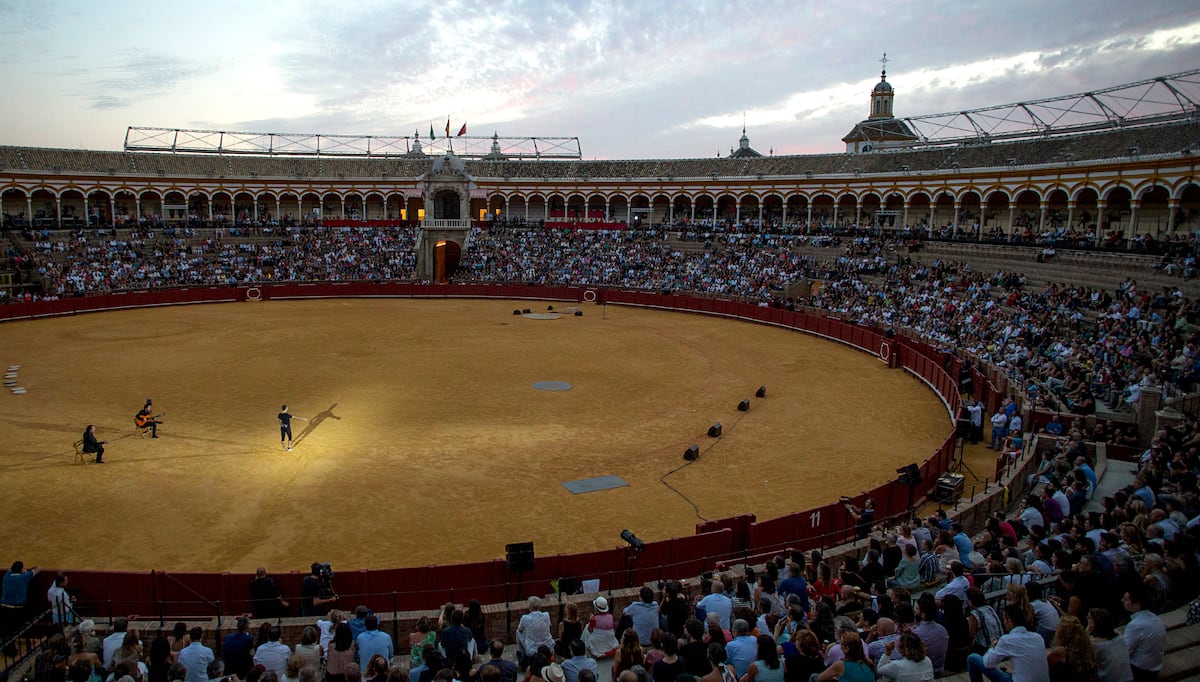Albert Serra has won the Golden Shell at the San Sebastián Festival with a film, Lonely afternoons, which starts from a basic question: What is a bullfighter? The question has a genealogy. In the files of his frustrated Paquiro or bullfightingOrtega y Gasset maintains that no one in Spain except him knew what a bullfighter was. Although he never managed to construct a closed answer to that question, Ortega does outline, very much in tune with his vitalist philosophy, a thesis that links this strange profession with a “non-transferable responsibility for life.” Ortega, furthermore, explicitly resists integrating the bullfighter into the world of art and sees in the styling, in the expressiveness, a corruption of the craftsmanship, of the agrarian truth of bullfighting. However, the lasting explanation of what a bullfighter is was called upon to establish, under other keys, not an essay, but the fictionalized biography of someone who embodies, for bulls, the definitive transition from craftsmanship to art, the emergence of the bullfighter as artist. We are talking about the well-known Juan Belmonte. bullfighter, from Chaves Nogales. “You bullfight as you are,” Belmonte’s iconic phrase, definitively introduces the bullfighter into the universe that Romanticism properly opens up, one where art is no longer only subject to the objective canon of geometry or harmony, that is, of the lex artis, but it requires the expression of a personality. The place where every man is unique. The bullfighter who, according to Belmonte, also assumes risk as the “axis of the sublime life”, thus acquires, as part of our generation of ’27 saw, a certain sanctity within the artistic ministry.
Lonely afternoons, by Albert Serra, is a cinematic work in shock, it provokes a disturbance, a shake of the spirit and the body. For this reason, and not only because it is about bullfighting, it shares an intimate bond with Liebestod, the smell of blood cannot go away from my eyes, the play that, a few years before, Angélica Liddell staged. It is also no coincidence that both of them, in no case bullfighting fans, place precisely in the Belmonte de Nogales the starting point of two approaches to bullfighting that establish the creative process of the bullfighter, his life dedicated to the bull and his acceptance of the death, in paradigm of truth in art. There is thus a modernity in these works and it lies in the fact that they are not essays on the morality of the festival, nor is it the beauty of the bullfight that fascinates the artist, but the persistent and strange figure of the bullfighter. A bullfighter who is no longer the protagonist of a proletarian and loving epic, in the canonical style of Blood and sand, what Alberto González Troyano has called “the bullfighter as a literary hero.” The bullfighter here is the object of attention in the abstract as a pure creator who, in a world of simulacrum, embodies a difficult but sublime artistic existence.
Bullfighting is a radically anachronistic art, tied to its crude agrarian truth, raw life and death. An art that does not tolerate representation
Bullfighting is, in any case, a radically anachronistic art, tied to its crude agrarian truth, raw life and death. An art that does not tolerate representation and that, due to this crudeness, and on the basis of a thriving animalistic morality, has been materially prohibited in some places. Angélica Liddell was born in Figueres and Albert Serra in Banyoles. The bulls ended in Catalonia in 2006, by decision of its Parliament. That prohibition sparked a moral reflection that had as editorial fruit both philosophical constructions in favor of the morality of bullfighting, such as those of professors Francis Wolff or Víctor Gómez Pin, as well as other works that organized the abolitionist argument. There are, for example, the works of Jesús Mosterín or Pablo de Lora. The eternal dispute between the bullfighting culture and the anti-bullfighting culture acquired a special philosophical and legal strength during these years. However, it is in the wake of this abolitionist debate that a gradual, and unfinished, transition begins within bullfighting, from the cultural to the countercultural. Already in 2004, Pedro G. Romero raised it with the dancer Israel Galván in Arena, a show where the bullfight is not so much national as it is heretical, and which, with the voice of Niño de Elche, integrated anti-bullfighting as that other side of the passion that, as Diego Carrasco insists, is essential to understand bullfighting from its origins. The complete bullfighting work of Rafael Sánchez Ferlosio, compiled by El Paseo, serves well to observe, about his person, that vehement and contradictory synthesis of the fervent supporter and the anti-bullfighting man because he is anti-Spanish, and not out of compassion for animals but out of shame for men. .
We said that the transition from the cultural to the countercultural is unfinished. The decision to end the National Bullfighting Prize places bullfighting in what, in my opinion, would be its natural and vital place in history, as a radically autonomous and sovereign sphere. However, in parallel, regional attempts to subsume, or domesticate, bullfighting as an ideological culture are also visible. In any case, in this struggle, what persists, and what someone like Albert Serra has been able to portray, is the radical veracity of the bullfighter as an artist. It is because of the bullfighter’s vital dedication to his art that he is a paradigm of the artist and, in turn, bullfighting, with its crudeness, a reality so stubborn and irreducible.
Victor J. Vazquez He is a professor of Constitutional Law at the University of Seville. His latest book is the essay The solitude of the artist. Censorship, limits and cancellations (Athenaica, 2023).


